
November 30, 1927
Alhambra
Meet Nona Lesher, the cool 20-something check kiter whose arsenal of multi-hued hairpieces helped disguise her during a spree of bad paper pushing, busted in a market at 305 East Valley Boulevard.
But the wigs are only the tip of a hairy iceberg. For among the suspicious items discovered in the room shared by Nona, hubby Harvey (or Harry), half-brother Phil Rohan and pal Mike Garvey at 2048 West Twentieth Street were an unheard of 61 pairs of shoes and twenty hats, plus Harry, Phil and the aforementioned wigs.


The men soon became suspects in the November 1 drug store beating death of proprietor A.R. Miles (or A.M. Miller) at 2329 West Jefferson after Lesher allegedly confessed to friend H.S. Walton, "I pulled that West Jefferson job—I hit Miles over the head and when he came to and called me ‘Heinie’ I finished him with my feet." However, Walton later said he had been so drunk that night, he might have imagined the whole thing, had only spoken out because he’d been told charges against him would be dropped if he did, and anyway, he believed the trio was innocent.
Still, 10-year-old witness Eddie Yates ID’d Phil Rohan as the youth in a snazzy blue and white sweater who he’d seen dashing from the crime scene. Lesher and Garvey also looked familiar to the boy. Roberta Scriver, sitting in a car outside the drug store, also identified the trio. Simple robbery-murder case with eyewitnesses, eh?
But then a cop’s badge was found in Mike Garvey’s possession, leading to the arrest of 77th Street Division policeman George H. Foster, the Wig Gang’s next door neighbor, on charges that he’d used the badge to shake down bootlegger John Sykes for $57 in exchange for not noticing a quantity of liquor stored in a vacant house; Rohan and Garvey supposedly served as muscle on the robbery, and somehow Garvey ended up with the badge.
By January, the male members of the Wig Gang had been convicted of murder and sent to San Quentin for life, while back in LA, Officer Foster was thrown off the force and tried on a series of bootleg shakedown charges.
But come December 1928, witness Roberta Scriver testified that she’d seen someone else leave the murder scene, one Harry Rosenfeld. The Grand Jury reopened the case, it was noted that the 10-year-old witness was actually watching a movie during the crime, and after begging San Quentin ex-con Rosenfeld to tell all he knew (he snarled he wouldn’t do it, lest he get a knife in the back from breaking the criminal code), the hapless Wig Gang was released after two years and eight months.
Once freed, the trio sought $5000 each in payment from the state for their ordeal, while Lesher and Rohan’s mother Carrie testified she’d spent $6000 on their defense and appeals. During this hearing, which was ultimately unsuccessful, an Alhambra Detective offered the hitherto unknown information that their arrest had resulted from a tip from the Wig Lady herself, Nona Lesher. It was unclear if she had remained true to Harvey during his incarceration, but one assumes the marriage didn’t survive this revelation. At least their mother still loved ’em!
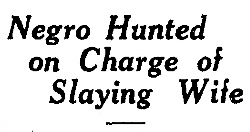 Despite there being a chance for a difference—Adams steadily asserted that the woman committed suicide—on October 12, 1925 it took a Los Angeles jury a record twenty-five minutes to send him to the gallows. (This being in part or wholly dependent on Adams’ race seems obvious—writ large as he’s routinely described as the “giant negro,” a term of which Times seems unusually fond.)
Despite there being a chance for a difference—Adams steadily asserted that the woman committed suicide—on October 12, 1925 it took a Los Angeles jury a record twenty-five minutes to send him to the gallows. (This being in part or wholly dependent on Adams’ race seems obvious—writ large as he’s routinely described as the “giant negro,” a term of which Times seems unusually fond.)






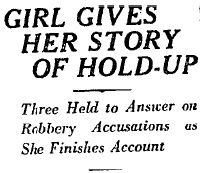
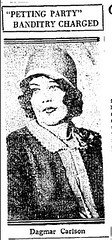
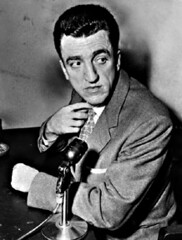

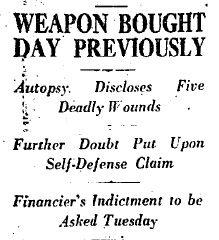
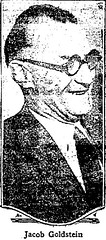 Joseph Stern, by bashing him four times over the head with a hammer and firing three bullets from a revolver into his body. It would have been less messy if only Goldstein had let an attorney handle the dissolution.
Joseph Stern, by bashing him four times over the head with a hammer and firing three bullets from a revolver into his body. It would have been less messy if only Goldstein had let an attorney handle the dissolution. 


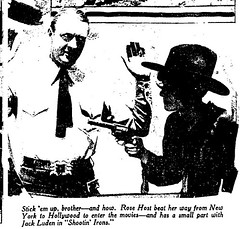 Luden. See – that’s Rose in the photograph, nothing more than a silhouette. Her part was so small she wasn’t even mentioned in the credits, and her Hollywood dreams ended with one picture. Rose Host the actress was not heard from again.
Luden. See – that’s Rose in the photograph, nothing more than a silhouette. Her part was so small she wasn’t even mentioned in the credits, and her Hollywood dreams ended with one picture. Rose Host the actress was not heard from again. 
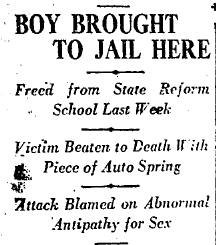 Today, 16-year-old Durward Wittenmeyer confessed to the murder of Fannie Weigel, the wife of a Pomona confectioner. It was just a few days since his release from the Whittier State School, a reformatory. The emotionally disturbed Wittenmeyer said that on his way home from the movies on May 28, he picked up an automobile spring leaf from a scrap heap, and "got a funny notion to hit someone." He saw Weigel walking home from the confectionery story, laden with bundles, and struck her twice in the side of the head. And what was the offense that had previously landed Wittenmeyer in juvie? Throwing a rock at a woman’s head in 1924.
Today, 16-year-old Durward Wittenmeyer confessed to the murder of Fannie Weigel, the wife of a Pomona confectioner. It was just a few days since his release from the Whittier State School, a reformatory. The emotionally disturbed Wittenmeyer said that on his way home from the movies on May 28, he picked up an automobile spring leaf from a scrap heap, and "got a funny notion to hit someone." He saw Weigel walking home from the confectionery story, laden with bundles, and struck her twice in the side of the head. And what was the offense that had previously landed Wittenmeyer in juvie? Throwing a rock at a woman’s head in 1924.
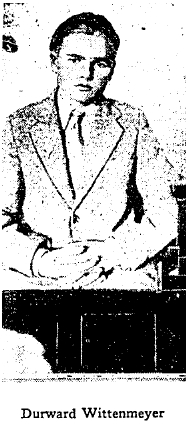

 Convicted murderer Earl J. Clark was granted a stay of execution today as his appeal twisted its way through the State Supreme Court. There was a time when Clark’s chances to avoid the gallows seemed promising; however, following an escape from prison, things were looking grim.
Convicted murderer Earl J. Clark was granted a stay of execution today as his appeal twisted its way through the State Supreme Court. There was a time when Clark’s chances to avoid the gallows seemed promising; however, following an escape from prison, things were looking grim.
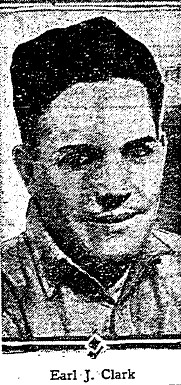 In July of 1925, Clark was sentenced to hang, but his attorneys immediately initiated an appeal to save his life. The appeal before the State Supreme Court was repeatedly delayed while Clark languished in the Los Angeles County Jail. On March 16, 1926, just days before his appeal was scheduled to come before the court, Clark and five others escaped from jail. While the five were quickly captured, Clark managed to go into hiding for over nine months. He was finally found in Minot, North Dakota, the proprietor of a paint store across the street from the local police station and husband to the daughter of one of Minot’s leading citizens.
In July of 1925, Clark was sentenced to hang, but his attorneys immediately initiated an appeal to save his life. The appeal before the State Supreme Court was repeatedly delayed while Clark languished in the Los Angeles County Jail. On March 16, 1926, just days before his appeal was scheduled to come before the court, Clark and five others escaped from jail. While the five were quickly captured, Clark managed to go into hiding for over nine months. He was finally found in Minot, North Dakota, the proprietor of a paint store across the street from the local police station and husband to the daughter of one of Minot’s leading citizens. 


